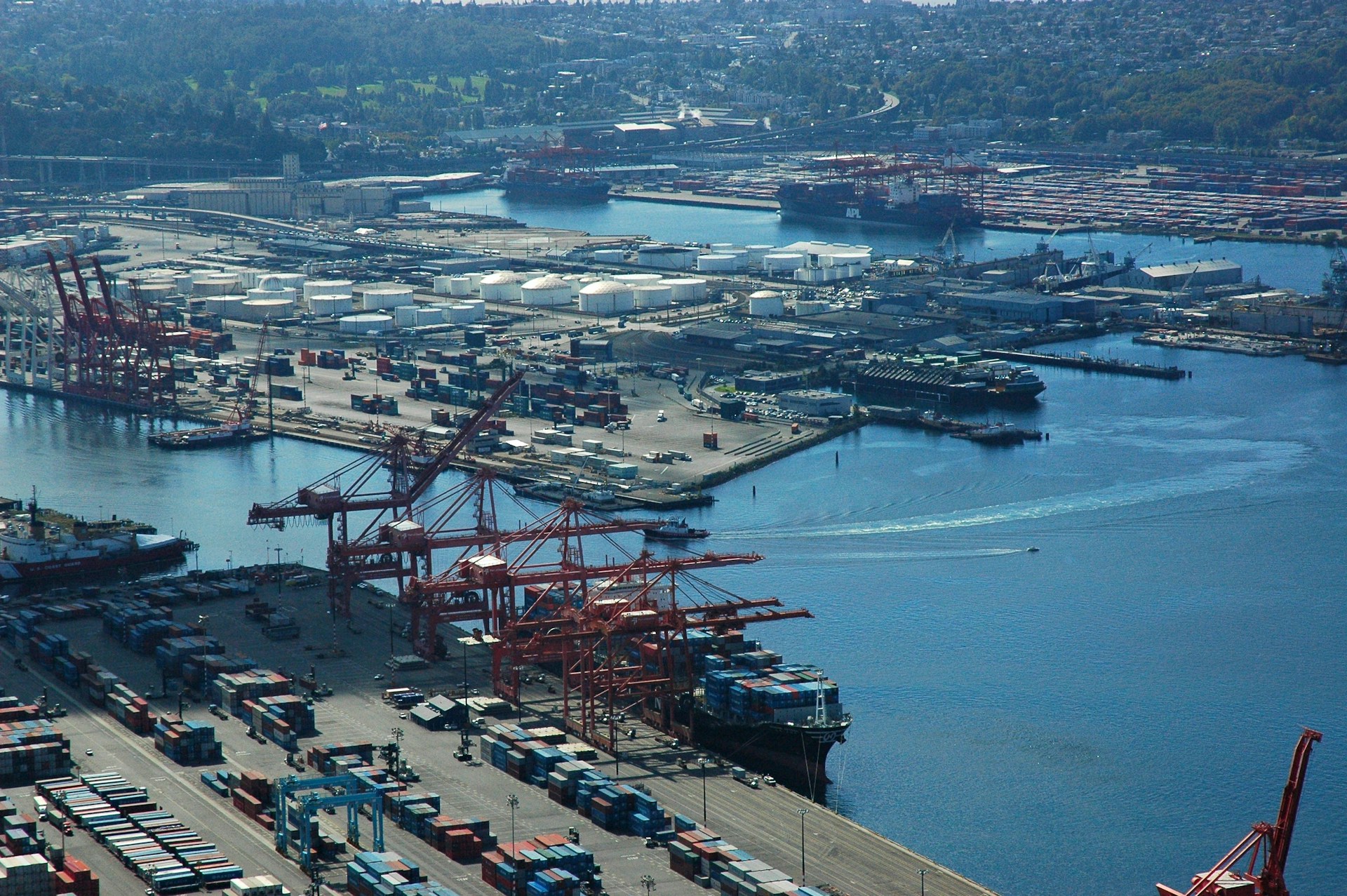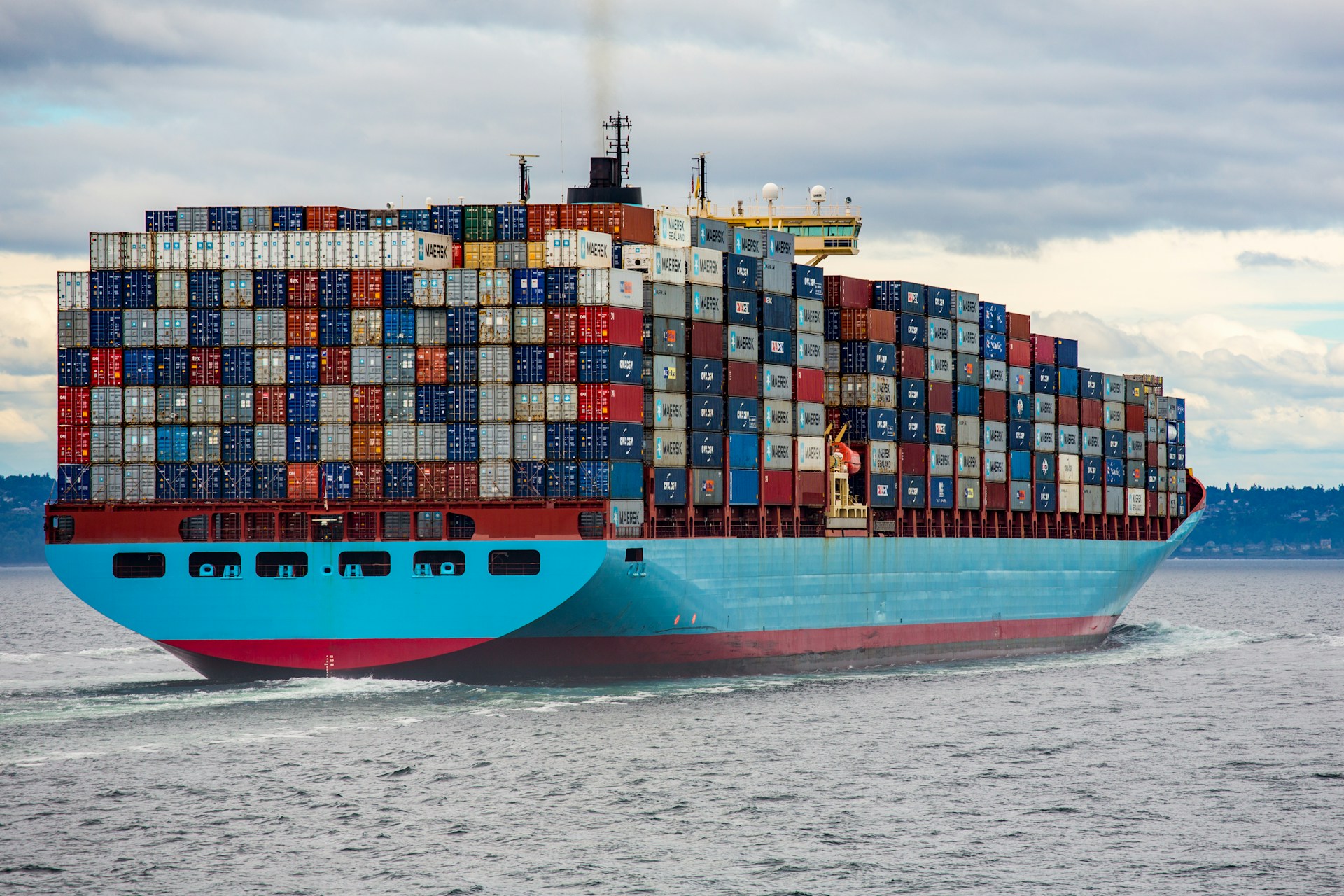Efficiency and punctuality are paramount in the realm of fresh produce retail.
The logistical process behind ensuring that fruits and vegetables reach the consumer while still fresh is equally vital.
Ineffectual strategies in this process can lead to significant losses due to reduced shelf life.
Thus, safeguarding the optimization of shipping forms a crucial essence of the entire operation.
With a strong emphasis on time and freshness, our discussion will delve into methods to accomplish this task effectively.
We will elucidate various strategies that can transform the task from a complicated maze into a seamless operation.
Contents
- Techniques For Streamlining Produce Shipping Operations
- 1. Implement Automated Inventory Management Systems
- 2. Optimise Packaging for Longer Shelf-Life
- 3. Invest in temperature-controlled transportation.
- 4. Train Staff in Proper Handling Procedures
- 5. Create efficient delivery routes.
- 6. Regularly Maintain Transportation Vehicles
- 7. Use barcodes or RFID for tracking
- 8. Adopt a First In, First Out Policy
- 9. Integrate delivery scheduling software.
- 10. Use Data Analytics for Forecasting Demand
- The Bottom Line
Techniques For Streamlining Produce Shipping Operations
1. Implement Automated Inventory Management Systems
Increasing efficiency and effectiveness within a particular operation often lies in streamlining the processes and reducing unnecessary manual intervention.
One of the crucial steps in this direction in the shipping operations of produce is the implementation of automated inventory management systems.
This method holds the potential to not only streamline and decrease complexities but also improve accuracy and speed of the operations.
An automated inventory management system works by cataloguing, monitoring, and updating inventory levels in real time, thus eliminating the need for physical inventory checks, reducing human errors, and speeding up the inventory process.
It operates by collecting essential data via barcodes, radio frequency identification (RFID), or other data collection technology, and subsequently feeding this information into a centralized digital system.
Digitising inventory management allows for real-time tracking of stock levels, reducing the likelihood of stock-outs or excess inventory.
By allowing integration with other enterprise systems such as sales, purchasing, and finance, an automated inventory management system enhances data consistency and operational transparency.
Such systems not only aid in maintaining an optimal inventory level but also provide vital insights to identify patterns and trends in demand, paving the way for a more accurate demand prediction.
This, in turn, significantly aids in making more efficient purchasing and production decisions.
Beyond this, by automating mundane tasks, resources can be redirected towards more critical and strategic tasks, thereby helping in increasing overall productivity.
However, it is essential to note that the implementation of such a system is not a one-time activity but requires regular updates and maintenance to ensure the system’s effectiveness.
Choosing the right solution that fits the business model, involving stakeholders in decision making, and thorough testing before going live are some of the best practices to be followed for successful implementation.
A well-implemented automated inventory management system can significantly streamline produce shipping operations, improve responsiveness to market changes, increase profitability by reducing holding costs, and enhance customer satisfaction by ensuring timely deliveries.
Moreover, with the plethora of software available in the market today, businesses can opt for customized solutions catering to their specific needs and challenges.
All these factors make the adoption of automated inventory management systems a critical strategy to maximise efficiency in produce shipping operations.
2. Optimise Packaging for Longer Shelf-Life
Improving the life expectancy of your produce is crucial in successful shipping operations.
One major contributor to prolonged shelf-life is the packaging method.
Utilising suitable packaging can substantially reduce spoilage and waste.
To optimise your packaging, it is essential to understand the specific needs of each type of produce.
Different fruits and vegetables require different types of packaging to maximise shelf-life.
Investing in research to determine the best packaging for each item can greatly boost product longevity.
To illustrate, leafy vegetables might benefit from plastic bags that allow for a certain amount of moisture retention, while fruits like apples might need bags with holes to let ethylene gas escape.
Moreover, evaluating the potential impact of packaging on the produce’s environment during the shipping process can also enhance its lifespan.
For instance, considering the effect of humidity and temperature on your packaging material can be beneficial.
Fruits and vegetables release moisture, and if this moisture is trapped within the packaging, it can cause premature spoiling.
Thus, the packaging material should be such that it allows for ventilation and does not trap excessive moisture.
Similarly, certain types of produce might require cold storage, and the packaging must be robust enough to withstand these conditions.
Next, the size and shape of your packaging can affect not just the longevity of the produce but also the efficiency of your shipping operations.
Choosing packaging that fits neatly together can maximise space utilisation in transportation vehicles, thereby enabling the shipment of more products at once.
Overall, optimising packaging plays a significant role in guaranteeing the freshness and quality of your produce throughout the shipping process.
It is therefore worthwhile to invest effort and resources into improving the packaging techniques used in your shipping operations.
3. Invest in temperature-controlled transportation.
Temperature control is crucial in the transport of fresh produce, as it directly influences the quality and shelf life of the products.
In order to maintain the freshness and extend the shelf-life of items, investing in transportation vehicles equipped with proper temperature-controlled systems is vital.
By investing in temperature-controlled transportation, you can significantly reduce the risk of spoilage and preserve the quality of produce during transit.
These specialized vehicles can maintain a consistent temperature throughout the journey, regardless of external weather conditions, which is ideal for shipping produce.
Likewise, the appropriate technology used in these vehicles can also moderate humidity levels which is another crucial factor for prolonging shelf-life.
You should note that different types of produce require different temperature and humidity ranges for optimal preservation.
Accordingly, investing in vehicles with flexible temperature and humidity controls can be highly beneficial.
This will allow the transportation of a wider variety of produce in its optimal condition.
An intelligent temperature monitoring system will provide real-time information about the in-transit temperature conditions.
This technology will give peace of mind to both, the owners and customers, by ensuring that the quality of the produce is being maintained effectively throughout its transit journey.
Furthermore, using temperature-controlled transportation is also a responsible environmental decision.
It will help to reduce food waste in the supply chain as the produce will reach the market in its best possible condition.
Overall, investing in temperature-controlled transportation can be a significant upfront cost but it leads to intangible benefits like customer satisfaction and confidence, as well as significant tangible benefits like reduced wastage, and increased shelf life.
The higher cost could be offset by the prevention of financial losses caused by spoilage of produce.
Therefore, temperature-controlled transportation is not just an investment in equipment, but also an investment in the quality of your produce and your business reputation.
4. Train Staff in Proper Handling Procedures
Training staff on proper handling procedures is a critical aspect of streamlining produce shipping operations.
Well-trained staff members are less likely to make errors that could lead to damage or spoilage of the produce.
In addition, proper handling procedures can reduce handling time by increasing the efficiency of each individual task.
Handlers should be trained in correct lifting techniques to avoid injury and promote productivity.
During this procedure, staff should be educated about the vulnerability of the produce and the importance of preserving its quality and freshness.
This education should include advice on how to avoid bruising the products and how to handle them in the appropriate way during packaging and transportation.
Each training session should be tailored to the specific produce being handled, addressing its unique characteristics and vulnerabilities.
The trainers should also give staff members insight into the entire supply chain process so they have a broader understanding of their role and the impact of mishandling on customers and the company itself.
Constant refresher training should also be emphasised, as this keeps staff members updated on new handling techniques or proactive procedures.
Special attention should be paid to the appropriate ways of packaging and unloading these perishable goods.
Implementing a systematic and well-structured training program will result in increased productivity and efficient shipping operations.
The benefits of such training extend beyond immediate efficiency – well-trained staff can also contribute to business continuity planning by equipping them with the necessary skills to handle unexpected circumstances in the supply chain.
Furthermore, hiring outside experts to conduct the training sessions can provide a fresh perspective and introduce new best practices into your produce shipping operations.
Finally, staff who are well trained are more likely to stay engaged with their work and feel a sense of pride in their part of the supply chain, leading to a decrease in employee turnover.
This investment in staff training is pivotal for every company seeking to boost its efficiency and secure its long-term viability in the competitive world of produce shipping operations.
5. Create efficient delivery routes.
In the realm of produce shipping operations, a key technique for streamlining operations is creating efficient delivery routes.
The creation of smart delivery routes revolves around comprehensively understanding the various factors that influence the effectiveness and timeliness of produce delivery, such as traffic, weather, distance, and demands of specific customers.
Inefficient delivery routes can not only waste valuable time but also increase fuel expenditure, thus negatively affecting the overall cost of the operation.
However, by employing intelligent route optimization algorithms, companies can dramatically reduce unproductive time spent on the delivery route, while simultaneously reducing fuel consumption.
Investing in cutting-edge route planning software can help businesses to dynamically adapt their delivery routes, thereby catering to myriad factors such as real-time traffic information, vehicle capacity, and customer delivery windows.
Benefits of efficient delivery routes also extend beyond cost-savings and time management.
It also leads to an enhanced customer experience as the freshness of the produce directly depends on the time spent in transit.
While creating efficient delivery routes, it is also necessary to consider the type and quantity of the produce being transported.
Certain produce may require quicker delivery due to their shorter shelf-life or the specific requirements of the customers.
Delivery routes should, therefore, be planned such that they can facilitate expedited delivery for such produce.
Efficient delivery routes also reduce the probability of produce damage caused by long transits which often results in unhappy customers and potential revenue loss for businesses.
The increased use of data analytics and machine learning techniques have revolutionized route planning by providing real-time insights for companies to optimize operations on the go.
Thus, the creation of efficient delivery routes is not a once-and-done job, but a continuous process that requires ongoing monitoring, reevaluation, and adjustment.
Overall, creating efficient delivery routes is a critical component in streamlining produce shipping operations, and ensuring the delivery of fresh, high-quality produce to the customers.
6. Regularly Maintain Transportation Vehicles
Regular maintenance of transportation vehicles is a crucial step in streamlining produce shipping operations.
It’s not only about keeping the trucks running smoothly, but also about ensuring that the temperature control systems are operating at their optimal levels.
When dealing with fresh produce, a slight fluctuation in temperature during transportation can lead to premature deterioration, thereby affecting the quality of the product by the time it reaches the consumer.
This makes regular vehicle maintenance a non-negotiable task in the entire supply chain of fresh produce.
Keeping the vehicles in top-notch condition ensures minimal breakdowns, thus avoiding unnecessary delays in delivery.
Moreover, it goes without saying that frequent breakdowns can be costly, not just in terms of monetary loss due to delayed or damaged deliveries, but also in the erosion of trust and reliability perceived by the customer.
Such costs can be easily avoided with a disciplined regimen of vehicle maintenance.
Now, the frequency and extent of maintenance would largely depend on the usage of the vehicle.
High usage vehicles might require more frequent check-ups and replacements of parts than those with lighter use.
However, even for vehicles with low to moderate usage, regular preventative maintenance can go a long way in avoiding unexpected breakdowns and prolonging the service life of the vehicle.
Make it a point to perform routine checks of critical components like the engine, brakes, tyres, air conditioning, and refrigeration systems.
Repairs or replacements should be made as soon as a potential problem is identified, rather than waiting for the problem to escalate and disrupt operations.
Remember, prevention is always better than cure, especially in a highly time-sensitive operation like fresh produce delivery.
Lastly, do not overlook the importance of keeping the interiors of the transportation vehicles clean and hygienic.
Regular cleaning and disinfection are key to preventing cross-contamination among different batches of produce.
Apart from routine checks, maintenance records should be meticulously maintained for each vehicle, enabling better planning for future maintenance work and highlighting patterns that could indicate the need for a replacement vehicle.
By maintaining transportation vehicles regularly, you’ll be saving time, money, and energy, all the while delivering top-quality fresh produce and securing customer satisfaction.
7. Use barcodes or RFID for tracking
In the world of logistics, specifically in the context of streamlining produce shipping operations, implementing the use of barcodes or RFID for tracking is an absolute game-changer.
These tracking technologies can significantly improve the efficiency and accuracy of shipping processes, from initial packing to ultimate delivery.
Barcodes and RFID tags provide detailed, real-time information about each product and its location within the shipping process.
By enabling real-time tracking, barcodes and RFID technologies greatly reduce the risk of human error, increases accuracy, and consequently improves the overall efficiency of shipping operations.
Different from conventional methods, these tracking technologies allow for the automatic identification and data capture (AIDC).
That is, they automatically identify objects, collect data about them, and then enter that data directly into computer systems with minimal human intervention.
This process accelerates tasks like inventory control, reducing both time and effort required.
Barcodes are usually scanned using optical scanners, commonly known as a barcode reader.
The barcode is a machine-readable code in the form of numbers and a pattern of parallel lines of varying widths that can be printed and adhered to a product.
Radio-frequency identification (RFID) on the other hand, uses electromagnetic fields to identify and track tags attached to objects, including shipping boxes and palettes of produce.
RFID doesn’t require the tag to be within the line of sight of the reader, hence, multiple tags can be read at once with greater efficiency than with barcodes.
These tracking techniques improve the control over the products throughout the delivery process, providing crucial data such as shipment arrival times, condition of the product, and any delays or issues encountered.
Equally important, these systems can help pinpoint any deficiencies in the supply chain, allowing operators to quickly adjust and optimize procedures.
Moreover, implementing barcodes and RFID technology can increase customer satisfaction by providing accurate and timely information about the status of their orders.
Thus, the utilization of barcodes or RFID technology in tracking greatly contributes to streamlining produce shipping operations, making it an essential technique for a successful, efficient and reliable operation.
8. Adopt a First In, First Out Policy
One of the most fundamental techniques to streamline produce shipping operations is to adopt a first in, first out (FIFO) policy.
This technique is often employed in industries handling perishable goods, like fruits and vegetables, to ensure freshness and reduce risk of spoilage.
FIFO essentially means goods that are received first are the ones that are shipped out first.
When implemented correctly, this policy can optimize inventory turnover, maximize shelf-life, and minimize waste.
The FIFO policy is also beneficial in cases of price fluctuations because it allows businesses to sell goods at the price they were bought at, reducing the chances of facing a loss.
Just like in a grocery store where shoppers are encouraged to pick the items at the back because they are fresher, the FIFO policy encourages the same routine in your warehouse.
This policy not only maintains the integrity of your produce but also increases customer satisfaction by providing them with fresh and high-quality goods.
FIFO policy might appear easy on paper but its practical implementation requires a lot of accurate tracking and efficient organization of your inventory.
Specially designed racks and storage systems that facilitate FIFO execution can be considered to make the process smoother and more effective.
Warehouse layout also plays a crucial role in enforcing FIFO policy.
Ensuring the smooth and unblocked movement of goods from receiving to shipping can help in proper implementation of FIFO.
It is also important to train your staff about the significance of this policy and the right way to implement it.
Aiding this policy with the right technology such as RFID or Barcodes can help in ensuring a more effective FIFO policy.
Adopting a FIFO policy is not only beneficial for businesses handling perishable goods, but it can also be beneficial for those dealing with non-perishable items.
The FIFO technique serves as a great strategy in inventory management and can help drive efficiency in your shipping operations.
Remember, maintaining a successful FIFO system requires constant monitoring and regular auditing to ensure that older stock doesn’t get left behind.
9. Integrate delivery scheduling software.
When it comes to streamlining produce shipping operations, integrating delivery scheduling software can greatly enhance efficiency and accuracy.
This kind of software, often cloud-based, allows for real-time tracking, immediate updates, and the ability to schedule, reroute or monitor deliveries with a few simple clicks.
One of the core advantages of delivery scheduling software is the ability to minimize human error.
By enabling automated data entry, scheduling and tracking, this software effectively removes a vast portion of potential issues stemming from human mistakes.
Furthermore, most delivery scheduling software offer features that can optimise your delivery routes which can lead to significant savings in fuel and time.
This results in higher productivity rates and lower operational costs, thus improving the overall efficiency of your business operations.
Automating scheduling also allows for better time management within the team as the need to manually input schedules and track deliveries is greatly reduced.
Employees can, therefore, focus their efforts on more strategic tasks that can drive the growth of your produce shipping business.
Another advantage of integrating delivery scheduling software into your operations is the increased visibility it gives to managers and customers alike.
Customers can benefit from receiving real-time status updates on their produce deliveries, thereby enhancing their overall service experience.
On the other hand, managers gain a clearer view of the entire shipping process, which can be essential for decision making and strategy formulation.
Also, integrating delivery scheduling software can enhance communication between all parties involved in the shipping process, from the driver to the end customer.
Regular alerts provide updates on delivery schedules, delays, or changes, reducing uncertainties and enhancing overall transparency in the process.
Considering all the benefits, integrating delivery scheduling software into your produce shipping operations is a significant leap towards achieving operational efficiency and effectiveness.
Allocating the necessary resources towards this technology can let your business reap the benefits of an organized and streamline delivery system.
By doing so, you not only enhance the core operations of your business but also elevate the overall customer experience, thereby increasing customer satisfaction and loyalty in the long run.
10. Use Data Analytics for Forecasting Demand
In the world of produce shipping operations, using data analytics for forecasting demand has become increasingly vital.
Forecasting demand for produce is essential in determining the appropriate volume of products to store, move, and sell, thus minimizing waste and maximizing profits.
Data analytics uses historical sales data, market trends, and other relevant factors to predict future demand with remarkable accuracy.
This approach to demand forecasting provides a clear picture of what sales patterns might look like in the immediate future, ensuring that shipping operations are always adequately prepared.
Adopting data analytics in produce shipping operations helps companies avoid overstocking which can lead to product spoilage or understocking which results in missed sales opportunities.
Demand forecasting also aids in efficient route planning and optimizes the scheduling of deliveries.
By forecasting future demand, companies can plan their shipping routes in advance, thereby saving time and reducing transportation costs.
Furthermore, data analytics allows for the utilization of real-time data in decision making — a crucial factor in the fast-paced world of produce shipping operations.
Real-time data can reveal sudden shifts in demand patterns and alert companies to unexpected market changes or logistical challenges.
Using data analytics for demand forecasting also promotes sustainability in operations by reducing food waste through accurate planning.
Accurate demand forecasts allow for precise packaging and processing, further reducing waste and damage to produce throughout the shipping process.
Lastly, data analytics in forecasting demand guides the strategic decision-making process by providing key insights into market trends and customer behaviors.
These insights help in adapting services to meet the evolving needs of customers effectively and maintaining a competitive advantage in the market.
In the end, the use of data analytics in forecasting demand is a key technique in streamlining produce shipping operations, leading to increased efficiency, reduced costs, and enhanced customer satisfaction.
The Bottom Line
Through focused implementation and leveraging of technology, businesses can significantly reduce the amount of produce wastage.
Integrating automated inventory management systems and delivery scheduling software, employing barcodes or RFID for accurate tracking, and using data analytics for precise demand forecasting are all vital measures.
It remains equally crucial to prioritize physical handling aspects such as optimized packaging, temperature-controlled transportation, regular vehicle maintenance, efficient delivery routing and diligent staff handling procedures.
Additionally, the adoption of a simple yet effective ‘first in, first out’ policy can drastically reduce wastage from spoilage.
By integrating these strategies, businesses can gain control over their produce lifecycle, leading to reduced wastage and increased efficiency and profitability.




